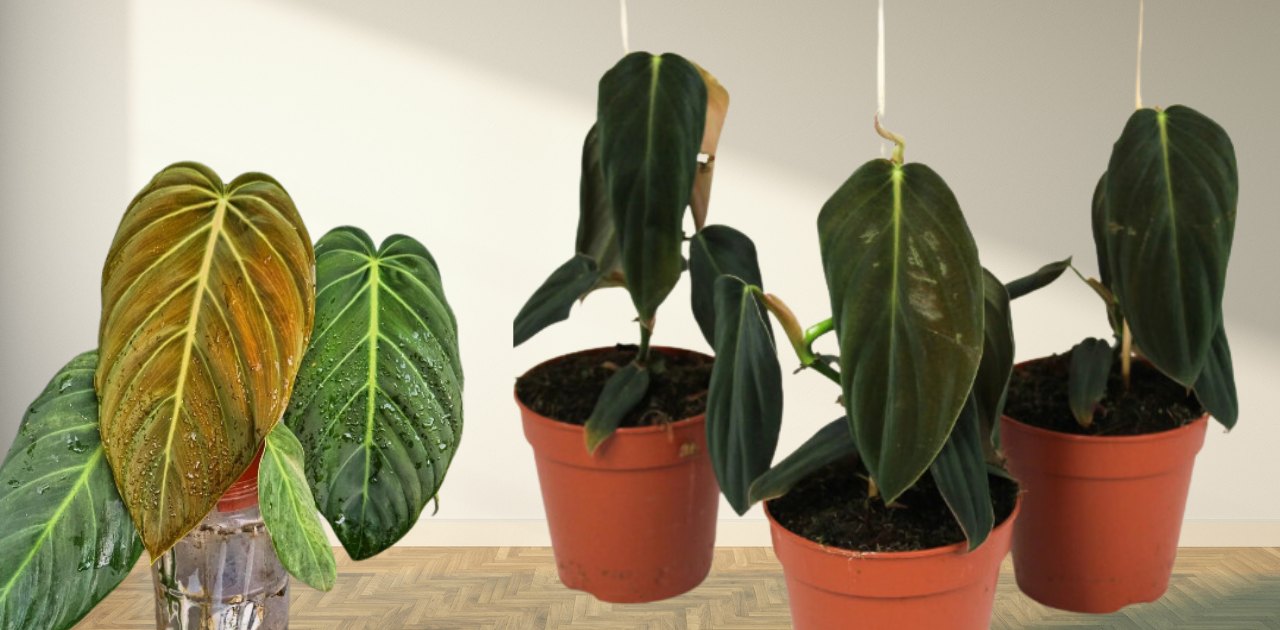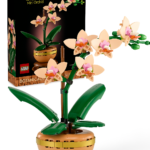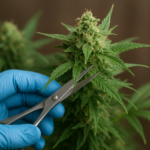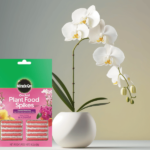Philodendron Gigas is a stunning addition to any indoor garden, known for its large, velvety leaves and vigorous climbing habit. Native to the lush rainforests of Central and South America, this tropical beauty brings a touch of the exotic to your home. However, like any plant, it has specific care requirements to thrive. This guide, “Philodendron Gigas Care: Tips and Tricks for a Thriving Plant,” will walk you through everything you need to know to keep your Philodendron Gigas healthy and vibrant.
From understanding its light and humidity needs to mastering watering and fertilization techniques, we’ll cover all the essential aspects of care. Whether you’re a seasoned plant parent or a beginner, these tips and tricks will help you create the perfect environment for your Philodendron Gigas to flourish, turning your living space into a green oasis.
About Philodendron Gigas

Philodendron Gigas is a captivating plant that has captured the hearts of plant enthusiasts worldwide. Known for its large, velvety leaves, this tropical beauty is native to the rainforests of Central and South America. It belongs to the Araceae family, which includes a variety of popular houseplants known for their lush foliage and ease of care.
The leaves of Philodendron Gigas are its most striking feature, showcasing a deep green color with a slightly bronze tint when young. These leaves can grow impressively large, adding a dramatic and exotic touch to any indoor space. As a climbing plant, Philodendron Gigas is perfect for training on trellises or moss poles, making it a versatile addition to your home décor.
Despite its exotic origins, Philodendron Gigas is relatively easy to care for, provided its specific light, humidity, and soil needs are met. `This plant not only enhances the aesthetic appeal of your home but also contributes to improving indoor air quality. Whether you’re a seasoned plant parent or a novice, Philodendron Gigas can be a rewarding addition to your indoor garden, offering beauty and a sense of accomplishment as you watch it thrive.
History and Origin

Philodendron Gigas, a stunning member of the Araceae family, has a rich history rooted in the lush rainforests of Central and South America. This tropical plant thrives in the dense, humid environments of Panama and Costa Rica. In its native habitat, Philodendron Gigas can be found climbing trees, reaching for the filtered sunlight penetrating the forest canopy. The plant’s ability to adapt to low light and high humidity conditions makes it a resilient species well-suited to the challenging rainforest environment.
The discovery of Philodendron Gigas is attributed to botanists exploring these verdant regions in the early 20th century. Fascinated by its large, velvety leaves and vigorous growth habit, they collected samples and documented its unique characteristics. This discovery piqued the interest of plant enthusiasts and horticulturists, leading to its introduction into indoor gardening.
Over the years, Philodendron Gigas has become a favourite among houseplant lovers. Its exotic appearance and relatively easy care requirements have made it a popular choice for indoor gardening. Today, it is widely cultivated and enjoyed by plant enthusiasts worldwide, bringing a touch of the rainforest into homes and offices.
Benefits of Planting Philodendron Gigas
Philodendron Gigas is not just a visually stunning plant; it also brings many benefits to your indoor environment. Here are some critical advantages of adding this tropical beauty to your home:
1. Aesthetic Appeal
Philodendron Gigas boasts large, velvety leaves that make a bold statement in any room. Its lush, tropical appearance adds a touch of elegance and exotic charm to your home décor. It can transform the space into a green oasis, whether placed in a living room, bedroom, or office.
2. Air Purification
Like many other houseplants, Philodendron Gigas helps to purify the air by removing toxins such as formaldehyde, benzene, and trichloroethylene. This natural air-cleaning ability improves indoor air quality, making your home a healthier place to live.
3. Humidity Regulation
Philodendron Gigas releases moisture into the air through a process called transpiration. This can help increase indoor humidity levels, especially in dry environments, which is beneficial for your health and the health of other houseplants.
4. Stress Reduction
Having plants like Philodendron Gigas in your living space can reduce stress and enhance your overall well-being. Greenery has been shown to have a calming effect, helping to lower anxiety levels and promote a sense of tranquillity.
5. Easy Care and Maintenance
Despite its exotic looks, Philodendron Gigas is relatively easy to care for. It thrives in a variety of indoor conditions, provided its basic needs for light, humidity, and watering are met. This makes it a great choice for both novice and experienced plant enthusiasts.
6. Versatility in Home Décor
Philodendron Gigas is highly versatile and can be used in various ways to enhance your home décor. Whether you let it climb a trellis, drape from a hanging basket, or trail along a shelf, it adapts beautifully to different settings and adds a dynamic, living element to your interior design.
7. Educational Value
Growing Philodendron Gigas can be a rewarding educational experience, especially for children. It provides an opportunity to learn about plant biology, ecology, and the importance of caring for living things. This hands-on learning can foster a greater appreciation for nature.
8. Therapeutic Gardening
Engaging in plant care can be a therapeutic activity. Tending to your Philodendron Gigas, watching it grow, and seeing it thrive can bring a sense of accomplishment and joy. Gardening activities have been linked to improved mental health and emotional well-being.
Physical Characteristics
Leaf Structure and Color
Philodendron Gigas is renowned for its large, velvety leaves. These heart-shaped leaves are a deep green with a bronze tint when they first emerge, gradually turning a rich, dark green as they mature. The leaves can grow up to two feet long, and their velvety texture adds a touch of luxury to any indoor garden.
Growth Pattern
Philodendron Gigas is a climbing plant that thrives when given support, such as a trellis or moss pole. In its natural habitat, it climbs up trees, using its aerial roots to secure itself. Indoors, it will exhibit similar climbing behavior, producing long stems that can be trained to grow vertically or allowed to trail gracefully.
Ideal Growing Conditions
Light Requirements
Philodendron Gigas prefers bright, indirect light. Direct sunlight can scorch its leaves, so it’s best to place it near a window with filtered light or in a well-lit room with plenty of indirect sunlight. It can tolerate lower light conditions but may grow more slowly and produce smaller leaves.
Temperature and Humidity Needs
This tropical plant thrives in warm temperatures, ideally between 65-80°F (18-27°C). It loves high humidity, around 60-80%, which mimics its natural rainforest environment. To maintain high humidity levels, consider using a humidifier, misting the plant regularly, or placing it on a pebble tray filled with water.
Soil Preferences
Philodendron Gigas requires a well-draining soil mix to prevent root rot. A good mix includes potting soil combined with perlite and orchid bark, which ensures adequate drainage while retaining some moisture. The soil should remain slightly moist but never waterlogged.
Watering and Fertilization
Proper Watering Techniques
Water Philodendron Gigas when the top inch of soil feels dry. Ensure the pot has drainage holes to allow excess water to escape, preventing root rot. During the growing season, more frequent watering may be necessary, while in winter, watering can be reduced as the plant’s growth slows.
Recommended Fertilizers
During the growing season, fertilize Philodendron Gigas monthly with a balanced, water-soluble fertilizer. This will provide the necessary nutrients for healthy growth and vibrant leaves. Be sure to follow the instructions on the fertilizer packaging to avoid over-fertilizing, which can harm the plant.
Potting and Repotting
Choosing the Right Pot
When potting Philodendron Gigas, choosing a pot with drainage holes is essential to prevent water from accumulating at the bottom and causing root rot. The pot should be slightly larger than the plant’s current root system, providing enough space for growth without being overly large, which can retain too much moisture.
When and How to Report
Philodendron Gigas generally need repotting every 1-2 years, depending on their growth rate. The best time to repot is in the spring or early summer when the plant is actively growing. Here’s a step-by-step guide to repotting:
- Prepare the New Pot: Fill the bottom of the new pot with a well-draining soil mix that includes potting soil, perlite, and orchid bark.
- Remove the Plant: Gently remove the Philodendron Gigas from its current pot. If the plant is root-bound, you may need to carefully loosen the roots with your fingers or trim some outer roots.
- Inspect the Roots: Check the roots for any signs of rot or disease. Healthy roots should be white or light brown and firm to the touch. Trim away any damaged or rotting roots with clean, sharp scissors.
- Place in New Pot: Position the plant in the new pot, ensuring it sits at the same depth as in the previous pot. Fill around the roots with the soil mix, pressing down gently to eliminate air pockets.
- Water Thoroughly: After repotting, water the plant thoroughly to help settle the soil and reduce transplant shock. Ensure excess water drains out.
- Post-Repotting Care: Place the repotted Philodendron Gigas in a location with bright, indirect light. Monitor the plant closely for the first few weeks and maintain consistent watering and humidity levels to support recovery and new growth.
Propagation Methods

Propagating Philodendron Gigas is a rewarding way to expand your plant collection or share this beautiful plant with others. Two primary methods for propagating Philodendron Gigas are stem cuttings and air layering.
Stem Cuttings
Propagating Philodendron Gigas through stem cuttings is a straightforward and effective method. Here’s how to do it:
- Select a Healthy Stem: Choose a healthy stem with at least two or three leaves and visible nodes (the points where leaves attach to the stem).
- Make the Cut: Cut the stem just below a node using clean, sharp scissors or pruning shears. Make sure the cutting is about 4-6 inches long.
- Prepare the Cutting: Remove the lower leaves to expose at least one or two nodes, as these are the points where roots will develop.
- Rooting Medium: You can root the cutting in water or directly in soil. If rooting in water, place the cutting in a jar filled with clean water, ensuring the nodes are submerged. Plant the cutting in a small pot filled with a well-draining soil mix if rooting in the soil.
- Provide Proper Conditions: Place the cutting in a location with bright, indirect light. If rooting in water, change it every few days to keep it fresh. If rooting in the soil, keep the soil moist but not soggy.
- Wait for Roots to Develop: Roots should start to develop within a few weeks. Once the roots are about 1-2 inches long, you can transplant the cutting from water to soil, if necessary.
Air Layering
Air layering is another effective method for propagating larger or more mature Philodendron Gigas plants. This method encourages roots to form on a stem while still attached to the parent plant. Here’s how to do it:
- Select a Healthy Stem: Choose a healthy, mature stem at least 12 inches long.
- Make a Cut: About halfway up the stem, make a small, shallow cut or notch below a node. The cut should be about one-third of the way through the stem.
- Apply Rooting Hormone: Dust the cut area with rooting hormone to encourage root development.
- Wrap with Moss: Take a handful of moist sphagnum moss and wrap it around the cut area. Secure the moss with plastic wrap or aluminium foil, ensuring it stays moist but not soaked.
- Monitor and Maintain: Check the moss regularly to ensure it stays moist. After a few weeks to a couple of months, roots should begin to form in the moss.
- Cut and Plant: Once a substantial root system has developed, cut the stem below the new roots and carefully remove the plastic wrap or foil. Plant the rooted section in a pot with well-draining soil.
Pruning and Maintenance
Pruning and maintaining a Philodendron gigas can help keep the plant healthy and looking its best. Here are some tips:
Pruning
- Timing:
- Prune during the growing season, typically spring and summer, when the plant can quickly recover.
- Tools:
- Use sharp, sterilized pruning shears to prevent infection and clean cuts.
- Removing Dead or Damaged Leaves:
- Trim off any yellow, brown, or dead leaves at the base of the stem.
- Controlling Size:
- Prune back stems to control the plant’s size and shape. Cut just above a node (where a leaf attaches to the stem) to encourage new growth.
- Encouraging Fullness:
- To encourage a bushier appearance, trim back leggy stems. This promotes branching and fuller growth.
Maintenance
- Light:
- Provide bright, indirect light. Avoid direct sunlight, which can scorch the leaves.
- Watering:
- Water when the top inch of soil feels dry. Ensure the pot has drainage holes to prevent waterlogging, which can lead to root rot.
- Humidity:
- Philodendron gigas enjoy high humidity. Use a humidity tray or humidifier, or mist the leaves regularly.
- Fertilizing:
- Fertilize with a balanced, water-soluble fertiliser every 4-6 weeks during the growing season.
- Cleaning:
- Wipe the leaves with a damp cloth to remove dust and help the plant photosynthesize efficiently.
- Repotting:
- Repot every 1-2 years or when the plant becomes root-bound. Choose a pot that’s 1-2 inches larger in diameter than the current one.
- Posts:
- Regularly check for common pests like spider mites, aphids, and mealybugs. Treat infestations promptly with insecticidal soap or neem oil.
Can Philodendron Gigas be Grown Outdoors?
While primarily popular as an indoor plant, Philodendron Gigas can be grown outdoors under the right conditions. Here’s what you need to know to successfully cultivate Philodendron Gigas in an outdoor setting:
1. Climate Requirements Philodendron Gigas thrives in warm, humid environments like its native tropical rainforests. If you live in a region with a tropical or subtropical climate, where temperatures remain between 65-80°F (18-27°C) year-round, your Philodendron Gigas can flourish outdoors. In cooler climates, it’s best to keep the plant indoors or only move it outside during the warm summer months.
2. Light Exposure Outdoors: Philodendron Gigas prefers bright, indirect light. It should be placed where it receives filtered sunlight, such as under the canopy of more giant trees or on a shaded patio. Direct, harsh sunlight can scorch its leaves, while deep shade may hinder its growth.
Soil Conditions
Ensure that the outdoor soil is well-draining, rich in organic matter, and retains some moisture without becoming waterlogged. You can amend garden soil with compost or use a potting mix similar to what you would use indoors, incorporating perlite and orchid bark for better drainage.
4. Watering Needs Outdoors: Philodendron Gigas may require more frequent watering than indoors, especially during hot, dry periods. Water the plant when the top inch of soil feels dry, ensuring the soil remains consistently moist but not soggy. Be mindful of rainfall and adjust your watering schedule accordingly.
5. Humidity Levels In its native habitat, Philodendron Gigas enjoys high humidity. If your outdoor environment is dry, consider misting the plant regularly or using a humidity tray to maintain moisture levels. Grouping it with other plants can also help create a microclimate with higher humidity.
6. Protection from Elements While Philodendron Gigas can handle warm temperatures, they should be protected from strong winds, heavy rains, and cold drafts. If you live in an area prone to sudden weather changes, consider placing the plant in a sheltered spot or bringing it indoors during extreme conditions.
Seasonal Care and tips :
If you live in a region with distinct seasons, you may need to transition your Philodendron Gigas indoors as temperatures drop. Before the first frost, move the plant to a warm, humid indoor environment to prevent cold damage. Gradually acclimate the plant to outdoor conditions during the growing season to avoid shock.
8. Pest Management Outdoor plants are more susceptible to pests. Regularly check your Philodendron Gigas for signs of common pests like aphids, spider mites, and mealybugs. Use appropriate pest control measures, such as insecticidal soap or neem oil, to keep infestations in check.
Common Pests and Diseases
Philodendron gigas, like many houseplants, can be susceptible to various pests and diseases. Here are some of the most common issues and how to manage them:
Common Pests
- Spider Mites:
- Signs: Tiny, web-like structures on the undersides of leaves, yellowing and speckling of leaves.
- Treatment: Wipe leaves with a damp cloth, increase humidity, and use insecticidal soap or neem oil.
- Aphids:
- Signs: Clusters of small, green or black insects on new growth, sticky residue (honeydew), and distorted leaves.
- Treatment: Spray them with water to dislodge them, and use insecticidal soap or neem oil.
- Mealybugs:
- Signs: White, cottony masses on stems and leaves, stunted growth, and honeydew.
- Treatment: Wipe with a cotton swab dipped in rubbing alcohol, and use insecticidal soap or neem oil.
- Scale Insects:
- Signs: Brown or tan, shell-like bumps on stems and leaves, yellowing and dropping of leaves.
- Treatment: Scrape off scales with a blunt tool, and use insecticidal soap or horticultural oil.
Common Diseases
- Root Rot:
- Cause: Overwatering or poor drainage.
- Signs: Yellowing leaves, mushy roots, and wilting.
- Treatment: Remove affected roots, repot in fresh, well-draining soil, and adjust watering practices.
- Leaf Spot:
- Cause: Fungal or bacterial infection.
- Signs: Brown or black spots on leaves, often with yellow halos.
- Treatment: Remove affected leaves, increase air circulation, and avoid wetting the foliage. Use a fungicide if necessary.
- Powdery Mildew:
- Cause: Fungal infection.
- Signs: White, powdery substance on leaves and stems.
- Treatment: Increase air circulation, reduce humidity, and use a fungicide.
- Bacterial Blight:
- Cause: Bacterial infection.
- Signs: Water-soaked lesions on leaves, which turn brown and spread.
- Treatment: Remove and destroy affected leaves, improve air circulation, and avoid overhead watering.
Prevention Tips
- Inspect New Plants:
- Quarantine new plants before introducing them to your collection to prevent the spread of pests and diseases.
- Maintain Proper Watering:
- Avoid overwatering and ensure proper drainage to prevent root rot and fungal infections.
- Provide Adequate Air Circulation:
- Ensure good airflow around your plants to reduce humidity-related diseases.
- Clean Regularly:
- Wipe down leaves to remove dust and check for early signs of pests or diseases.
Extra Tips
- Rotate the Plant:
- Rotate your Philodendron gigas regularly to ensure even growth and prevent the plant from leaning towards the light source.
- Support for Climbing:
- Provide a moss pole or trellis to support the plant’s natural climbing habit. This encourages more considerable leaf growth and a more robust plant.
- Soil Mix:
- Use a well-draining soil mix, such as a combination of potting soil, perlite, and orchid bark, to prevent waterlogging and promote healthy root development.
- Temperature:
- Maintain a consistent temperature between 65-80°F (18 and 27°C). Avoid exposing the plant to cold drafts or sudden temperature changes.
- Repotting Technique:
- When repotting, handle the roots gently and avoid compacting the new soil too tightly. This allows for better root growth and soil aeration.
- Water Quality:
- If your tap water is high in minerals or chlorine, use filtered or distilled water, as these can harm the plant over time.
- Fertilizer Application:
- Dilute the fertilizer to half strength to avoid over-fertilizing, which can cause leaf burn and other issues.
- Leaf Shine:
- Avoid commercial leaf shine products, as they can clog leaf pores. Instead, gently wipe leaves with a damp cloth to keep them clean and shiny.
- Monitoring:
- Regularly check the plant for early signs of stress, such as wilting, yellowing, or leaf drop, and address any issues promptly.
- Propagation:
- Propagate your Philodendron gigas by stem cuttings. Place the cuttings in water or directly into moist soil until they develop roots, then transplant them into their pots.
- Companion Plants:
- Pair your Philodendron gigas with other humidity-loving plants, such as ferns and Calyx, to create a microclimate that benefits all the plants.
FAQs
How often should I water Philodendron Gigas?
Water Philodendron Gigas when the top inch of soil feels dry. This typically means watering every 1-2 weeks, but the frequency can vary based on the plant’s environment, including light, temperature, and humidity. Ensure the soil remains consistently moist but not waterlogged to avoid root rot.
What is the best soil mix for Philodendron Gigas?
The best soil mix for Philodendron Gigas is a well-draining, rich organic mixture. A combination of potting soil, perlite, and orchid bark works well. This mix ensures good drainage while retaining enough moisture for the plant’s roots.
Can Philodendron Gigas be grown outdoors?
Yes, Philodendron Gigas can be grown outdoors in warm and humid climates year-round, with temperatures between 65-80°F (18-27°C). It prefers bright, indirect light and well-draining soil. In regions with cooler climates, it’s best to grow it indoors or only place it outside during summer, bringing it back indoors before temperatures drop.
How do I know if my Philodendron Gigas is healthy?
When young, a healthy Philodendron Gigas will have vibrant, deep green leaves with a slightly bronze tint. The leaves should be large and velvety with no signs of yellowing, browning, or wilting. Additionally, healthy growth will be steady, with new leaves appearing regularly, and the plant should show no signs of pests or disease.
What should I do if my Philodendron Gigas leaves are turning yellow?
Yellow leaves on a Philodendron Gigas can indicate several issues. Check the watering schedule, as overwatering or underwatering can cause yellowing. Ensure the plant receives bright, indirect light and is not exposed to direct sunlight or deep shade. Also, assess humidity levels, as low humidity can lead to yellowing leaves. If pests or diseases are present, treat them promptly with appropriate measures such as insecticidal soap or fungicides.
Conclusion
Philodendron Gigas is a stunning and rewarding plant that brings a touch of the exotic to any indoor or outdoor space. Its large, velvety leaves and easy-care requirements make it perfect for novice and experienced plant enthusiasts. By providing the right light, humidity, and soil conditions, you can enjoy the beauty and benefits of this tropical plant. Whether for aesthetic appeal, air purification, or simply the joy of gardening, Philodendron Gigas is a valuable addition to your plant collection.
Read to know more: Philodendron Gigas vs Melanochrysum: Which is Right for Your Home?







